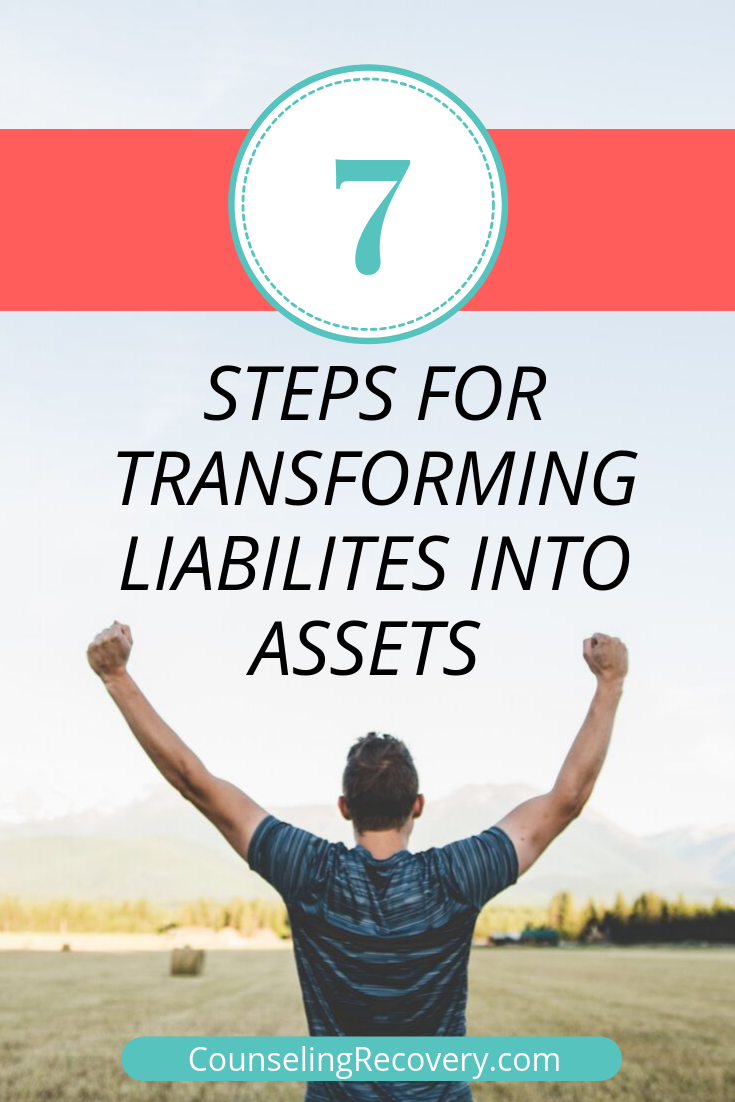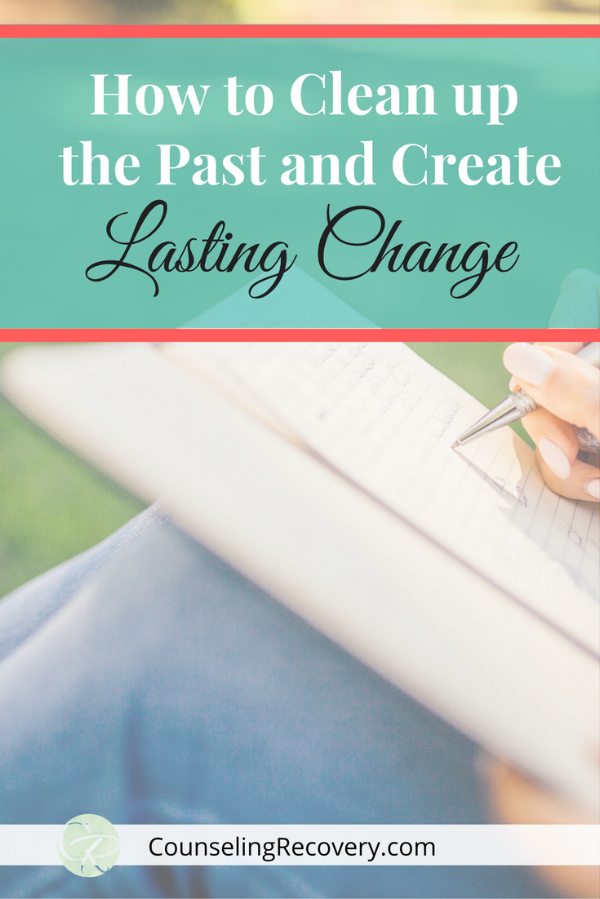7 Steps For Transforming Liabilities Into Assets
Personal transformation happens when we can look at ourselves honestly including our mistakes. By examining what doesn’t work, you can find out what does work! My favorite saying is that mistakes are only lessons because no one is perfect and striving to be is exhausting!
In 12 step recovery, taking an inventory includes making a list of what you do well and what areas you can improve. This blog shows you exactly how to do just that.
When Assets Become Liabilities
This exercise shows how to identify strengths and weak areas. Know that every trait can be an asset or a liability. The difference is determined by the degree it's expressed.
For instance;
Susan is always helpful. She's the first one to volunteer at her children's school and church events.
When she gives too much she neglects her own responsibilities and doesn't have time for herself.
Brian works 70-80 hours a week and his work means everything to him.
Because Brian works too much, he has trouble relaxing and has no personal life.
These examples show how assets become liabilities. Each strength turned into a liability when taken too far. The goal is moderation. You don’t need to stop the behavior completely.
How to Transform Liabilities into Assets
The key to transforming weaknesses is finding the gift in them. If you have trouble being assertive - the strength may be that you are flexible and easy-going. Someone who gives too much, has a generous heart. Get it?
When doing this, be gentle with yourself. This is not an exercise in beating yourself up. Everyone has weaknesses but learning from the past helps you make healthier choices.
An Exercise in Healing
I suggest doing this exercise in a notebook instead of electronically. Research shows that handwriting engages your brain differently than on a device. There is something about the physical act of writing that feels cathartic. If you've never tried journal writing, it's a powerful way to gain clarity.
Here are the steps for assessing yourself and transforming liabilities:
1. Make a List of Assets and Liabilities
List all the characteristics you have that are assets and areas of growth. If this is challenging for you, ask a trusted friend for feedback. It's really helpful to know what your strengths and weaknesses are because that is what makes you YOU!
Here are some to get you started.
Strengths: generous, helpful, compassionate, committed, loyal, trusting, easy-going, accepting
Liabilities: impatient, judgmental, critical, controlling, compulsive, procrastinates, perfectionistic
2. Identify Areas of Growth
Self-care including physical, emotional and spiritual needs
Coping skills - managing anger and other emotions, stress
Physical and emotional health - getting regular check ups, emotional support
Social life - connections with family, maintaining friendships, not being too dependent on one person
Career - job satisfaction, professional and financial goals
Spiritual - having a faith or belonging to a community that comforts you
3. Pick ONE Thing to Change
Don't tackle all of them at once. If you’re not a goal-oriented person, commit to making one small change. Believe me, that’s a great start! Growth occurs when you learn to live in the grey. It doesn't have to be perfect, you just need to get started.
4. Acknowledge Yourself - One Accomplishment and One Goal
Part of growth is acknowledging progress. Name one thing that you’re proud of accomplishing this year. Take time to acknowledge the work you've done. I cannot emphasis this enough. Glossing over your accomplishments short changes them.
I've heard many clients downplay their successes but then wonder why they struggle with self-esteem. You need to acknowledge your accomplishments before trying to get others to see them. Acknowledging yourself empowers you more than waiting for others to notice.
Name one area you’d like to improve. I do this every year by focusing on a word or phrase as my goal. Here are some personal examples I've done myself:
Telling my truth
Setting healthy boundaries
Being more authentic
Handling conflict
Letting go of perfectionism
5. How to Stay Focused on the Goal
Pick something that you really care about - not what you think you should do. Goals are no fun if you don't have the motivation to complete them. It has to mean something to you.
Once you set your intention, the universe typically provides opportunities to learn it. This means you'll be tested. For instance, the year I choose handling conflict as my goal, I was presented with some really challenging conflicts. I learned a ton about myself and gained confidence by the end of that year.
I learned how to prepare ahead of time (and go in with a plan) which really improved my communication. The universe gave me what I asked for but it wasn't easy. I had to be willing to feel the fear and do it anyway.
6. Make Effective Repairs
Sometimes to move forward means cleaning up what's unfinished. Ignoring old hurts and resentments doesn’t work because they leak out in sarcastic or hurtful comments.
Is there anything that you need to go back and repair? A repair could be an apology but really it’s an acknowledgment of your behavior. Admitting your part can release the tension and restore trust.
7. Learn to Let it Go
Letting go doesn't happen without a fight. Pain is a great motivator. Is there an old resentment or expectation that you need to let go of?
Letting go means that you stop expecting a different outcome. You can accept what happened despite the pain. In fact, the pain is what ultimately strengthens you.
Wouldn’t it be great to walk into the New Year (or new month) without carrying that pain around?
Moving Forward Takes Time
Doing this inventory helps you take stock of where you've been and where you want to go. It also provides an opportunity to let go of some unresolved pain and grief.
In 12 step programs this is called a 4th Step inventory. Sharing this writing with a trusted friend, counselor or sponsor (if you're in 12 step programs) is helpful. Pain witnessed leads to pain healed.
Get support if friends and family aren't enough. Al-Anon provides amazing, FREE support for anyone struggling in dysfunctional relationships.
Final Thoughts
Set your intention towards your goal and the lessons will come. You can learn to repair the past and heal relationships. Letting go of old hurt creates new energy for the future.
What's that one thing you’re willing to examine right now in your life?
Check out my resource library which includes my relationship checklist to assess what’s working and what needs to be fixed!



